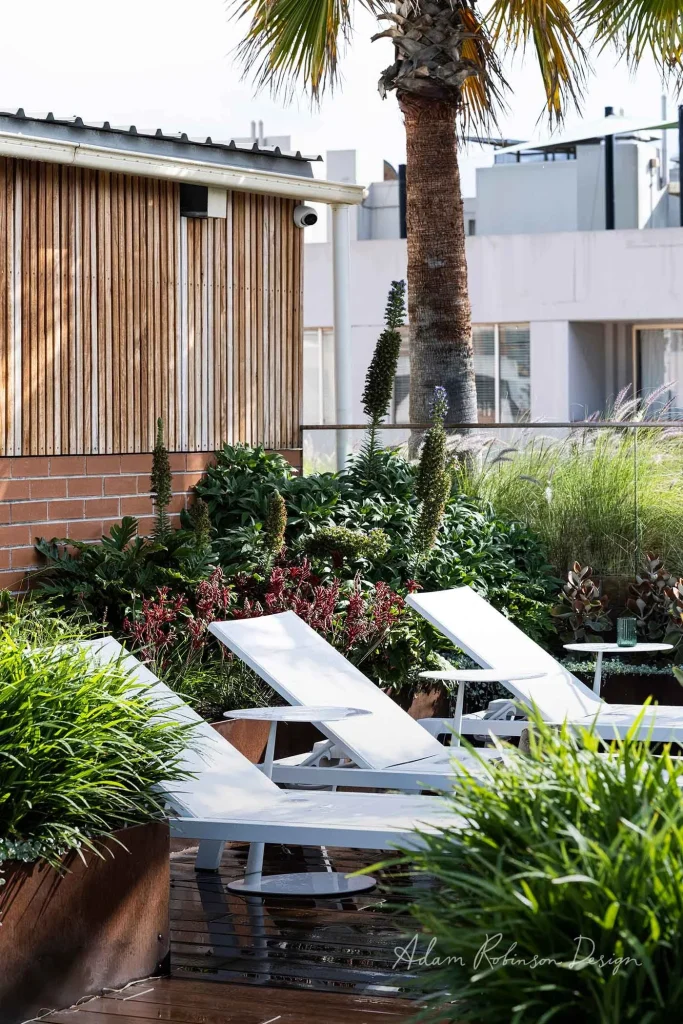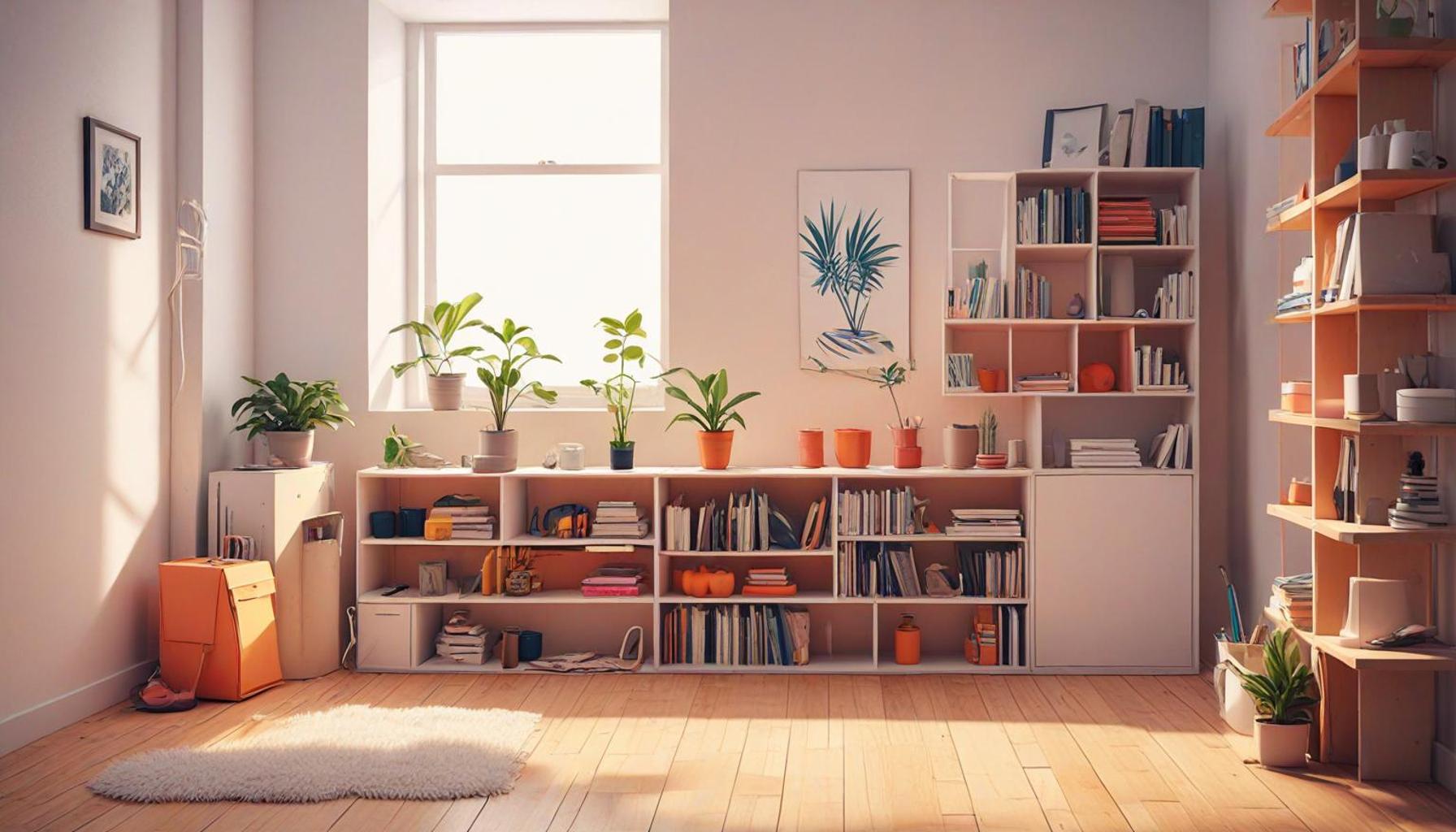Transforming Outdoor Spaces: How Minimalism Can Enhance the Functionality of Gardens and Balconies

The Power of Minimalism in Outdoor Spaces
In contemporary society, where rapid urbanization has often led to limited outdoor spaces, individuals and families are increasingly seeking ways to cultivate serenity and beauty in their gardens and balconies. Minimalism emerges as a compelling solution, encouraging a shift towards simplicity and intentionality in design. Rather than overwhelming outdoor spaces with excessive decoration and furniture, minimalism inspires a discerning focus on the essential elements that can make these areas both functional and visually pleasing.
Clear Design Principles
The foundation of minimalist design lies in its clear principles. Homeowners are encouraged to prioritize essential elements that serve a purpose while also enhancing the overall aesthetic. For instance, choosing a single, striking piece of garden art can draw the eye without cluttering the space. Additionally, a well-placed, minimalist water feature can bring tranquility and a sense of calm, acting as a focal point while still adhering to a clean design ethos.
Natural Materials
Another hallmark of minimalistic outdoor design is the use of natural materials. By opting for unrefined wood, smooth stone, and a variety of plants, spaces can evoke a connection to nature. For example, rustic wooden planters can frame flower beds beautifully without looking contrived. Choosing organic materials creates a harmonious ambiance and underscores sustainability, which resonates with eco-conscious homeowners across the United States.
Open Space
Embracing open space is crucial in minimalist design. Creating areas that allow for breathability and light can transform a cramped balcony into a peaceful retreat. Utilizing vertical gardening techniques can maximize space without sacrificing airflow, while also showcasing vibrant plant life. An open layout encourages movement and interaction with the environment, allowing for a greater appreciation of your outdoor oasis.
Functional Furniture
Minimizing clutter calls for functional furniture that can serve multiple purposes. Consider a bench that doubles as storage or a table that can be expanded for gatherings. This approach not only conserves space but also ensures that each item contributes to the overall functionality of the area. In metropolitan areas like New York or Los Angeles, where square footage comes at a premium, choosing versatile pieces can substantially elevate the usability of outdoor areas.

By incorporating these minimalist principles, gardens and balconies can evolve into tranquil retreats that foster relaxation and disconnect from the fast pace of urban life. This design philosophy does not just beautify spaces; it cultivates an atmosphere where homeowners can rejuvenate while fostering a deeper connection to the natural world around them. As we further explore this design trend, we will uncover methods to maximize even the smallest outdoor spaces, inspiring readers to create their own serene havens.
DISCOVER MORE: Click here to explore innovative solutions
Embracing Simplicity for a More Functional Outdoor Experience
As urban living increasingly emphasizes efficiency and practicality, the aesthetic of the minimalist garden serves as a refreshing counterpoint to the chaos typical of city life. This design approach not only focuses on reducing visual clutter but also enhances the overall functionality of outdoor spaces, making them more than just aesthetic appendages to homes. A minimalist garden or balcony encourages a thoughtful selection of elements that provide both utility and visual delight.
Strategic Plant Selection
One of the fundamental aspects of a minimalist outdoor space is strategic plant selection. Choosing a limited number of plant varieties allows for a cohesive and organized appearance. Consider the following strategies:
- Use native plants: They typically require less maintenance and are better suited for the local climate, allowing for a low-key garden that looks good year-round.
- Incorporate perennials: Unlike annuals, perennials will return season after season, reducing the need for replanting and the associated clutter.
- Create focal points: Use larger plants like ornamental grasses or small trees to serve as statement pieces while surrounding them with simpler ground cover or mulch.
By focusing on a curated selection of plants, homeowners can create a visually striking landscape that requires minimal upkeep, allowing for more time to enjoy the space rather than maintaining it.
Thoughtful Lighting Solutions
The right lighting can dramatically alter the atmosphere of an outdoor space. Minimalism encourages a thoughtful approach to lighting that highlights features without overwhelming them. Consider these options:
- String lights: These can add a warm ambiance without taking up physical space or detracting from the garden’s overall simplicity.
- Subtle LED fixtures: Built into pathways or under benches, they offer practical lighting while maintaining a clean look.
- Solar lanterns: A sustainable choice that provides soft illumination and can blend seamlessly into the garden environment.
Proper lighting not only enhances safety and visibility in outdoor areas but also contributes to the emotional warmth and invitation of the space, encouraging more time spent outdoors, especially during evenings.
Color Palette and Textures
Minimalist outdoor design favors a limited color palette, often drawing from neutral tones and natural shades. This approach integrates elements harmoniously, creating a peaceful visual experience. Here are a few considerations for color and texture:
- Use earth tones: Shades of green, brown, and gray can establish a grounded, serene environment.
- Contrasting textures: Incorporate smooth stones with coarse wood or soft foliage for depth without overwhelming the senses.
- Simplify furnishings: Opt for furniture with clean lines and subtle colors that do not dominate the space.
The careful selection of colors and textures can unify your garden or balcony, enriching the experience without sacrificing the minimalist ethos.
By embracing these principles of minimalist design, outdoor spaces can be transformed into seamless extensions of the home, inviting tranquility and functionality while allowing the natural beauty to shine through. As you reimagine your garden or balcony, consider how each aspect—plants, lighting, and aesthetic choices—can work together to create a cohesive, serene outdoor sanctuary.
| Advantage | Explanation |
|---|---|
| Enhanced Aesthetics | A minimalist design fosters a clean and serene environment, allowing plants and natural elements to take center stage, significantly enhancing visual appeal. |
| Increased Functionality | Streamlined furniture choices and thoughtful layout open up space, optimizing outdoor areas for relaxation or entertainment, making every inch count. |
| Sustainability | Minimalism often emphasizes eco-friendly materials and plants, promoting a lifestyle that is both beautiful and responsible towards nature. |
| Ease of Maintenance | Fewer decorative items mean less clutter, resulting in reduced upkeep time and effort, allowing you to enjoy your space more fully. |
Minimalism in gardens and balconies is about embracing simplicity. Choosing elements that serve multiple functions can maximize space and create areas that breathe tranquility. The focus on essential features enables homeowners to cultivate a surrounding that is not only aesthetically pleasing but also practical. By understanding the importance of minimalism, one can effectively transform outdoor spaces into functional havens. This approach also encourages the use of sustainable practices, aligning outdoor aesthetics with environmental responsibility. As these benefits unfold, one gains a deeper appreciation for the elegant beauty minimalism brings into a living space.
DIVE DEEPER: Click here to uncover more insights
Incorporating Functional Elements for Enhanced Usability
The core philosophy of minimalist design extends far beyond aesthetics; it also emphasizes functional elements that maximize utility without compromising style. Creating a space that serves multiple purposes while remaining uncluttered is a hallmark of an effective minimalist garden or balcony. Let’s explore some practical features that can elevate the usability of outdoor spaces.
Multifunctional Furniture
In an age where urban dwellers often struggle with limited space, selecting multifunctional furniture can be the key to a successful outdoor environment. Here are some ideas:
- Convertible seating: Benches that transition into tables or storage spaces allow for flexible use while reducing the need for excess furniture.
- Stackable chairs: These can be easily stored away when not in use, allowing for more open space for gatherings or activities.
- Planters with seating: Combining seating areas with planting beds creates a natural and comfortable environment that encourages relaxation while promoting greenery.
This approach not only maintains a clean look but also ensures that every piece of furniture serves a purpose, enhancing the overall functionality of the space.
Vertical Gardening Solutions
As urban settings often limit ground space, vertical gardening solutions can be an efficient way to incorporate greenery into minimalist outdoor areas. Consider these options:
- Wall planters: Installing planters on walls or fences maximizes available surfaces, creating a striking visual while allowing more room for movement.
- Hanging gardens: Sky-high arrangements using various pots connected by cords or shelves can turn an ordinary balcony into a verdant retreat.
- Vertical trellises: These structures support climbing plants, providing greenery without occupying valuable ground space.
Vertical gardens not only offer an effective use of space but also create exciting visual interest, inviting nature into compact urban settings.
Smart Plant Arrangement
Beyond aesthetics, the way plants are arranged can significantly impact the functionality of outdoor spaces. A smart plant arrangement considers factors such as growth patterns, heights, and seasonal changes:
- Layering plants: Position taller plants at the back and shorter ones in the front to create depth and ensure that all plants receive adequate sunlight.
- Seasonal rotation: By rotating plants based on the season, homeowners can maintain visual interest year-round while keeping maintenance straightforward.
- Companion planting: Grouping certain plants together not only creates an appealing visual balance but can also encourage better growth and health.
This method not only enhances aesthetics but also transforms a garden into a dynamic landscape capable of flourishing across different seasons.
Integrating Sustainable Practices
Minimalism and sustainability are closely intertwined, as both seek to do more with less. By incorporating sustainable practices, outdoor spaces can become eco-friendly havens:
- Rainwater harvesting: Installing a rain barrel can conserve water for irrigation while reducing the need for additional resources.
- Composting areas: Designating a small space for compost can close the loop on waste and provide rich nutrients for plants in a minimalist way.
- Native drought-resistant plants: Selecting plants that thrive in local conditions not only reduces water consumption but also promotes biodiversity.
By blending functionality with sustainability, minimalist gardens and balconies can thrive as both beautiful and responsible outdoor spaces that reflect their owners’ values and lifestyles.
DISCOVER MORE: Click here to learn how your space influences well-being</a
Conclusion
In a world where outdoor spaces are rapidly becoming extensions of our living environments, embracing minimalism can significantly enhance the functionality of gardens and balconies. By prioritizing multifunctional furniture, we can create adaptable spaces that accommodate various activities and gatherings while maintaining an aesthetically pleasing look. Incorporating vertical gardening solutions not only optimizes limited ground space but also adds a lush vibrancy to urban settings, truly transforming the ambiance.
Moreover, employing smart plant arrangements ensures that gardens remain dynamic and visually appealing throughout the seasons, while thoughtful integration of sustainable practices helps cultivate eco-friendly outdoor havens. By selecting drought-resistant plants and enacting clever water conservation techniques, outdoor areas can represent a harmonious balance between nature and modern living.
Ultimately, the potential of minimalist design lies in its capacity to make outdoor spaces more usable, versatile, and environmentally conscious. Homeowners and urban dwellers alike can benefit from this transformative approach, creating serene retreats that reflect their personal style and values. As we continue to explore the interplay between function and form, the minimalist perspective invites us to consider not just what we can add to our environments, but also what we can elegantly remove. With this mindset, any garden or balcony can evolve into a tranquil oasis, promoting a deeper connection to nature while navigating the complexities of contemporary lifestyles.



